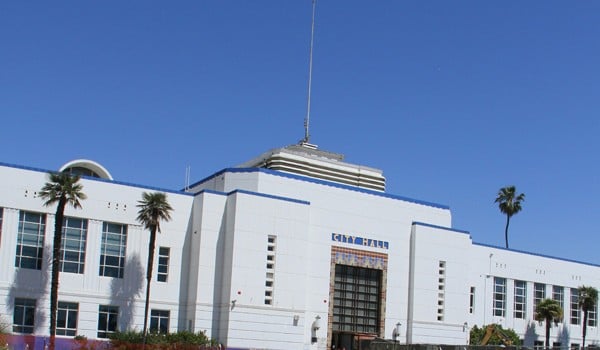Over the past few months conversations at City Hall have not always been, well, diplomatic.
A passionate fight over the future of Santa Monica’s skyline played out in the months before voters cast their ballots in the November election, as the battle over Measure LV pitted neighborhood associations against the City Council. The measure would have required a city-wide vote on all development projects above two-stories and reflected neighborhood leaders’ distaste for big buildings in Santa Monica.
The measure was defeated but wounds have not healed. In fact, the conversation is about to heat up again as the city decides just how high new buildings can tower over neighbors. With the long-awaited Downtown Community Plan heading toward the council chambers, Santa Monica’s new mayor wants to lower the temperature in the room.
As he takes the helm, newly appointed Mayor Ted Winterer sees his biggest obstacle as “trying to get our community, which was so divided this fall, to get common ground on so many issues and have an actual dialogue instead of a shouting match.”
Tuesday, the Santa Monica City Council unanimously voted to select Ted Winterer as mayor and Gleam Davis as mayor pro tempore. They will both serve two-year terms.
“I thought I had reasonably a good chance of being chosen as mayor, but seeing what happens in the past you take nothing for granted,” Winterer said.
A Dartmouth graduate, Winterer has live in Santa Monica for the past 25 years. He’s gradually worked his way up through city government: serving on the Planning Commission, the Ocean Park Association and an organizer for the Fourth of July parade.
Now that he’s mayor, Winterer is reflecting on the city’s 2015 Wellbeing Index, an innovative survey that sought to find out what problems are plaguing residents’ daily lives. While the survey received national recognition, not all the results were good.
Most disturbing to Winterer: The survey found only a third of 5-year-olds were ready for kindergarten, that only 25 percent of Santa Monicans eat enough fruit and vegetables, and that 29 percent feel disconnected from their city government.
“We need to do a better job of communicating what we’ve done that has had a beneficial impact in the city,” Winterer said.
Winterer also sees the city’s growing homeless population as an issue that’s becoming a crisis. He says it’s time for a “long, hard look” at the issue. Earlier this month, the Council voted to support a Los Angeles County quarter-cent sales tax to fund homeless programs. He sees the problem as both a housing issue and a mental health services issue.
“It’s a problem that has clearly escalated,” Winterer said.
The housing issue directly plays into development challenges the city will face while finalizing the Downtown Community Plan, or DCP. Right now, strategic planners with the city are crunching the numbers, trying to figure out how high new apartment buildings need to go in order to reach goals for increasing the city’s housing stock. The Planning Commission is still divided over how to balance affordability and live-ability in the city, as residents complain traffic congestion is at an all-time high.
The decision won’t be any easier once it lands in front of the mayor and city council, but Winterer says he’s intent on doing whatever is best for his community.
“We on the city council are public servants,” Winterer said. “This is primarily a volunteer job with a lot of hours and a lot of stress.”
kate@www.smdp.com








